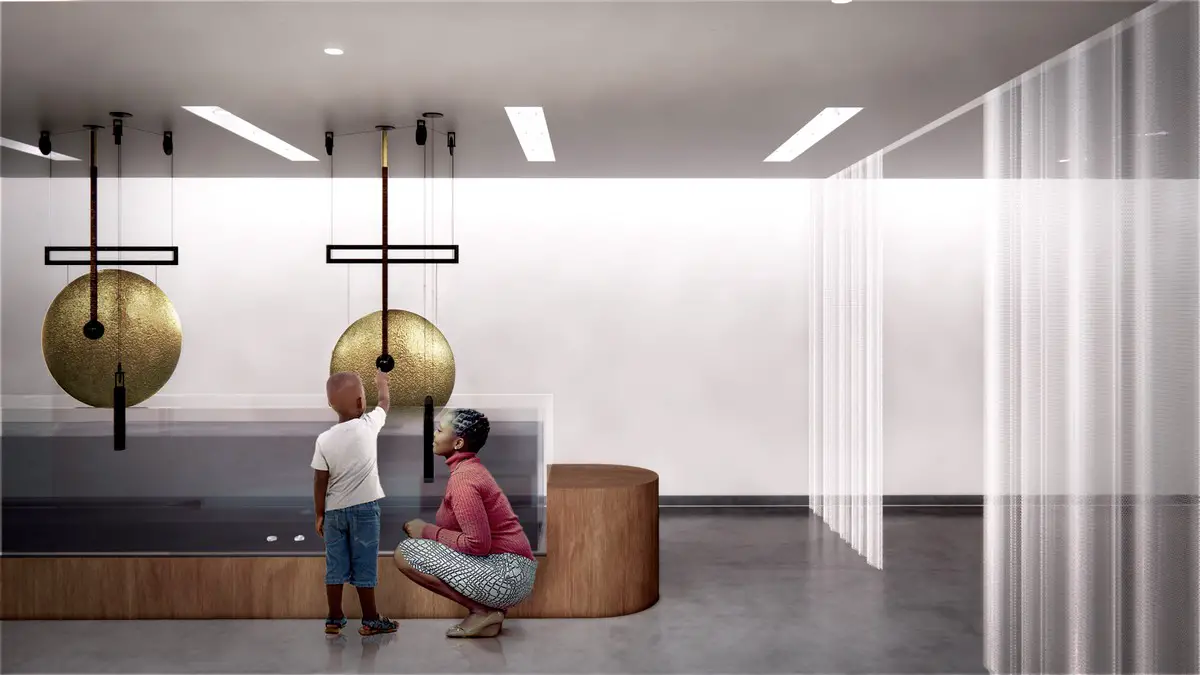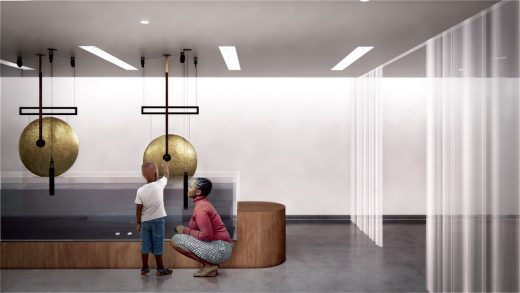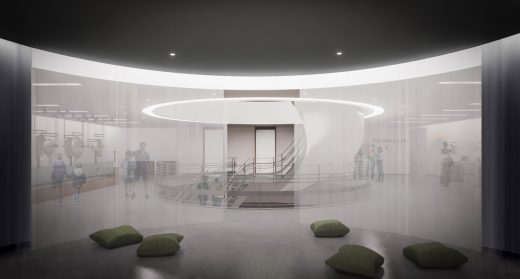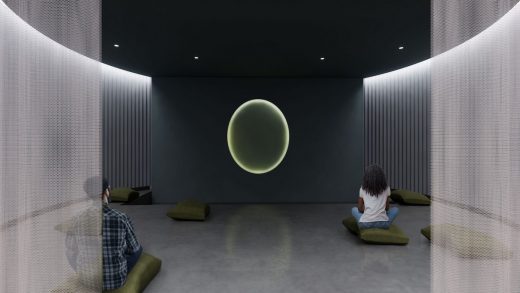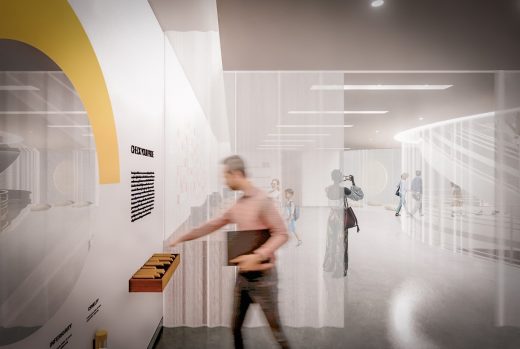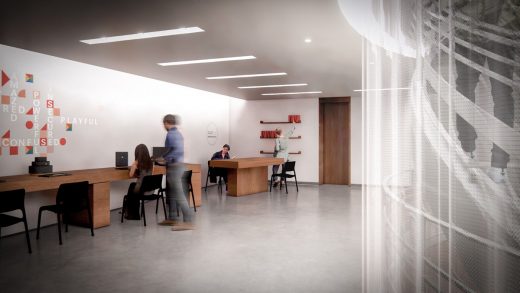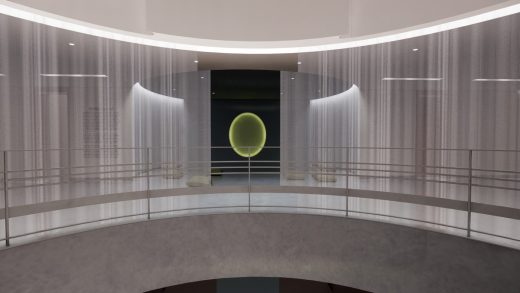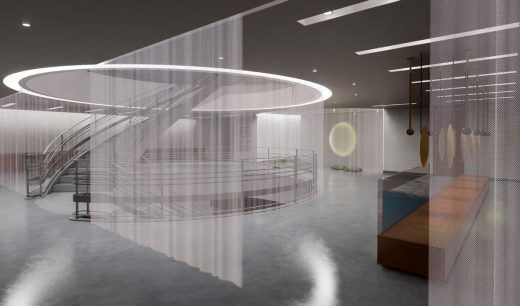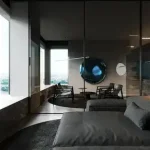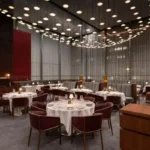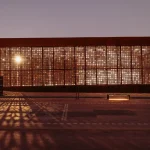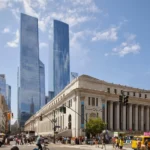Mandala Lab New York City, Rubin Museum of Art Building, Manhattan Architecture Images
Mandala Lab, Rubin Museum of Art, New York City
Aug 17, 2021
Design: Peterson Rich Office (PRO)
Location: 150 W 17th Street, New York, NY 10011, United States of America
THE RUBIN MUSEUM OF ART’S MANDALA LAB OPENS SEPTEMBER 24, 2021
The Mandala Lab is a cultural healing space designed to inspire connection, empathy, and learning. Free admission on opening weekend.
Mandala Lab at Rubin Museum of Art
NEW YORK, NY, August, 2021 — The Rubin Museum of Art announced today that the Mandala Lab, the Museum’s new interactive space for social, emotional, and ethical learning, will open to the public on September 24, 2021, with a free admission during opening weekend, September 24–26. Located on the remodeled third floor designed by Brooklyn-based architecture and design firm Peterson Rich Office (PRO), the Mandala Lab invites visitors to participate in five thought-provoking and playful experiences, featuring videos accompanied by scents, a site-specific commissioned sculpture that invites collective breathing, and curated percussion instruments dipped in water. Each activity aims to harness the power of difficult emotions and offer pathways to develop resilience, calmness, and connection. The new space will also function as the home for School and Family Programs, connecting younger generations to the teachings expressed in Himalayan art, through social, emotional, and ethical learning (SEE Learning), developed in partnership with Emory University.
“Visitors will be invited to smell, see, touch, and listen as they sense, interpret, and process their own thoughts and emotions, using the Mandala Lab as a lens for healing,” says Executive Director Jorrit Britschgi. “Given the emotional burden and tremendous social distress having come into sharper focus since 2020, the Mandala Lab hopes to serve as one of the city’s first cultural healing spaces and be a source of insight and well-being.”
Envisioned as a sensorial experience, each of the activities on the floor takes inspiration from powerful Buddhist principles that focus on self-awareness and awareness of others. Visitors will engage with a scent and memory library with contributions from six artists and master perfumer Christophe Laudamiel; participate in a synchronized breathing activity with the aid of a newly commissioned pulsing light sculpture by New York–based artist Palden Weinreb; take part in a gong orchestra with eight gongs suspended over water curated by international musicians; and more. As visitors journey through the space they will examine feelings of pride, attachment, envy, anger, and ignorance—known as kleshas in Buddhism—that cloud our understanding of the world around us. Visitors will then be invited to experiment and attempt to transform these emotional states into a complementary wisdom. In this way, the Mandala Lab aims to offer tools and new perspectives for coping with the day-to-day challenges and emotional burdens brought about by personal and societal complexities—all heightened by the COVID-19 pandemic.
“In Buddhism, the five kleshas are the key afflictive emotional responses that are the root cause of our suffering. Tantric Buddhist practitioners use mandalas as visualization aids to help transform these emotions,” says Tenzin Gelek, Senior Specialist, Himalayan Arts and Culture. “With the Mandala Lab, we’re using Buddhist wisdoms coupled with creative and interactive artworks and experiences to understand, unlock, and heal these difficult emotions within ourselves. This ‘mental gym’ invites us to face life with renewed wisdom and insights.”
The Mandala Lab experiences have been created in consultation with cognitive scientists, Buddhist teachers, and contemplative humanities researchers, and feature contributions from a diverse group of contemporary multidisciplinary artists including musician and performance artist Laurie Anderson; visual artist Sanford Biggers; filmmaker Tenzin Tsetan Choklay; drummer Billy Cobham; experimental filmmaker and writer Amit Dutta; singer musician Sheila E.; musician Peter Gabriel; percussionist Dame Evelyn Glennie; composer Sarah Hennies; composer Huang Ruo; percussionist Shivamani; video and installation artist Wang Yahui; film director, screenwriter, and producer Apichatpong Weerasethakul; visual artist Palden Weinreb; and composer and multi-instrumentalist Bora Yoon.
“When the commission was proposed, I was very excited by the opportunity to contribute to this exciting initiative,” says artist Palden Weinreb. “The Rubin is uniquely suited to refresh the dialogue between Buddhism and contemporary art, and I feel particularly aligned with the Mandala Lab’s innovative approach. It’s an honor to participate and hope my work will prove to be an inspiring addition to this thoughtfully reimagined space.”
The design, led by PRO founding architects Miriam Peterson and Nathan Rich, takes architectural and conceptual inspiration from a particular Tibetan Buddhist mandala, the Sarvavid Vairochana Mandala. Tantric Buddhist practitioners use mandalas as a contemplative aid in visualization practices aimed to transform one’s ordinary emotions into the more desirable qualities of enlightened beings. Like a mandala, the Mandala Lab is divided into four quadrants pointing to the cardinal directions, with a main circular chamber—the center of the mandala—represented by the Rubin Museum’s central spiral staircase.
Highlights of the design include:
- A 2,700-square-foot multipurpose open floor plan bounded by light, both natural and internally sourced, that converts for education, exhibition, or event needs
- Fine metal mesh partitions that surround the spiral staircase and divide the space into four quadrants, allowing for visibility between the different experiences
- An alcove with rounded walls and acoustic panels where experiential and educational content can be deployed with awide, drop-down projection screen
- Flexible space for lights-on learning with tables and chairs
“The majority of the Rubin Museum galleries are designed for the display of artworks and objects,” say design principals Nathan Rich and Miriam Peterson. “This new space is designed for collective experience. The floor is deliberately more open and connected than the other five levels of the Museum. Individual spaces are separated from one another by a translucent scrim, allowing for interactive experiences that are physically distinct but visually interconnected.”
Renderings: © Peterson Rich Office / The Rubin Museum of Art
SUPPORT
Lead support of the Mandala Lab is provided by Pierre and Tana Matisse Foundation, Rasika and Girish Reddy, Shelley and Donald Rubin, and the Tiger Baron Foundation.
Major support is provided by Anne and Albert Chao, Anne E. Delaney, Noah P. Dorsky, the Estate of Lisina M. Hoch, The Prospect Hill Foundation, Namita and Arun Saraf, Eileen Caulfield Schwab, and the Taipei Cultural Center of New York. Public funds are from the New York City Department of Cultural Affairs in partnership with the City Council, and the New York Council on the Arts with the support of Governor Andrew M. Cuomo and the New York State Legislature.
Mandala Lab public opening weekend is sponsored by New York Life.
We additionally thank the generosity of 223 sponsors and donors who contributed to our 2020 gala, Inside the Mandala: A Virtual Gala.
ABOUT PETERSON RICH OFFICE
Peterson Rich Office (PRO) is a Brooklyn-based architecture and design firm recognized for its cultural and residential projects at multiple scales. Founded by Miriam Peterson and Nathan Rich in 2012, the firm’s early work included artist studios, and in recent years has expanded to include New York City flagships for the international art gallery Perrotin and the beauty company Glossier, multi-unit residential design for both public and luxury housing, and private residential projects for creative clients.
In addition to designing the Mandala Lab at the Rubin Museum of Art in New York City, PRO is leading the design of a new gallery and arts center in Detroit and a ground-up exhibition building on a university campus. PRO was named a 2020 Emerging Voice by The Architectural League, which spotlights North American architects and designers who have significant bodies of realized work and the potential to influence their field.
www.pro-arch.com
ABOUT THE RUBIN MUSEUM OF ART
The Rubin Museum explores and celebrates the diversity of Himalayan art, ideas, and culture across history and into the present. With its globally renowned collection, the Rubin fosters understanding and appreciation of this extraordinary region by connecting its art and ideas to contemporary issues that are relevant in our visitors’ lives today.
Largely inspired by the philosophical traditions of Buddhism and Hinduism, the Rubin offers innovative exhibitions and programs that examine provocative ideas across the arts and sciences. In doing so, the Museum serves as a space for reflection and personal transformation, opening windows to inner worlds so visitors can better navigate outer ones.
rubinmuseum.org
Mandala Lab, Rubin Museum of Art, New York City images / information received 160821
Address: 150 W 17th St, New York, NY 10011, United States
Phone: +1 212-620-5000
Location: New York City, NY, USA
New York City Architecture
Contemporary New York Buildings
Manhattan Architectural Designs – chronological list
New York Architecture Walking Tours : by e-architect
265 West 45th Street Super Slender Tower
Design: RB Systems
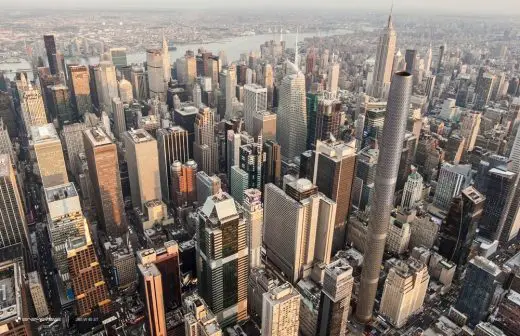
image courtesy of architects
265 West 45th Street Super Slender Tower
Kinfolk Studio, Brooklyn
Architecture: Berg Design
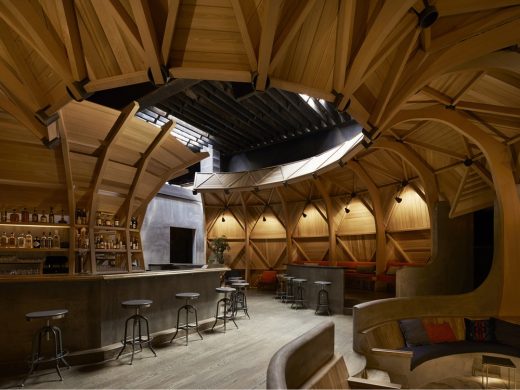
photograph : Edward Caruso
Kinfolk Studio in Brooklyn
Pier 2: Apartment of the Future
Design: Humphreys & Partners Architects
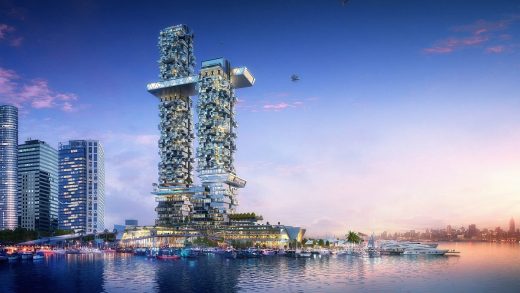
image courtesy of Humphreys & Partners Architects
Pier 2: Apartment of the Future in Manhattan
New York Architect Studios
Comments / photos for the Mandala Lab, Rubin Museum of Art, New York City page welcome

